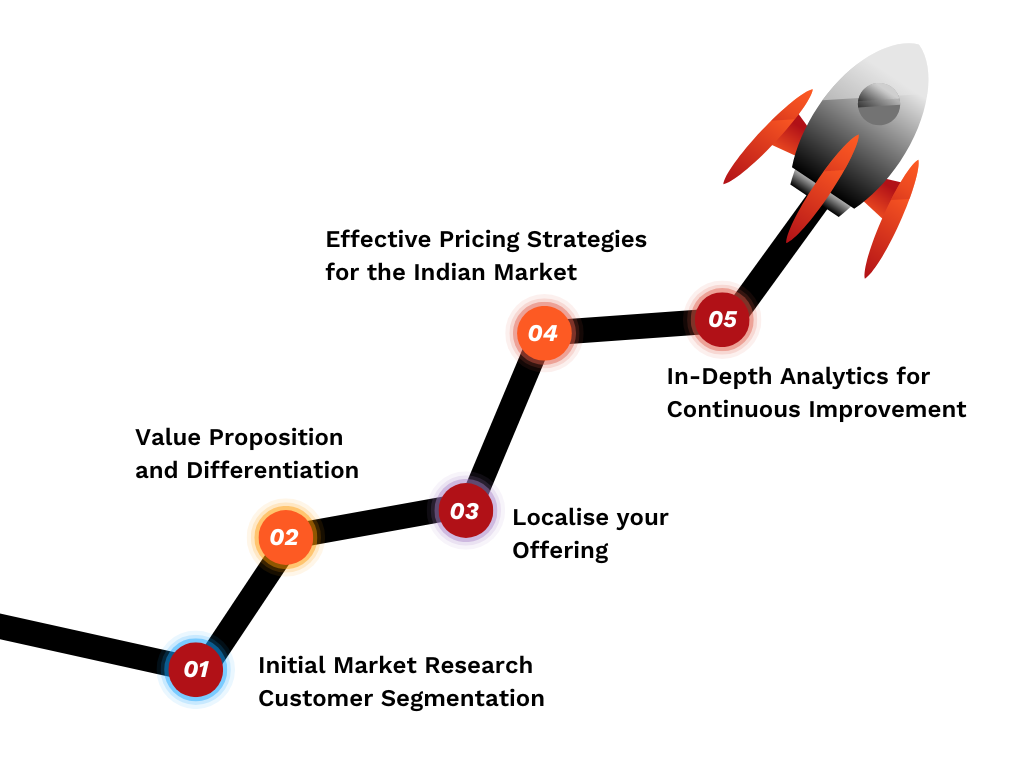Startup Blueprint for your First 100 Customers
For startups, the journey to secure their first 100 customers can be both exhilarating and challenging, especially in the diverse and dynamic landscape of the Indian market. Navigating through cultural nuances, understanding local preferences, and strategically positioning their products or services are crucial steps in this quest.
Find highlights from the session on “Getting Your First 100 Customers” by Ajay Rungta, Mentor at NSRCEL in this blog and get ready with the roadmap for your startup to build your initial customer base in the Indian context.

Initial Market Research and Customer Segmentation:
Before diving into the market, startups should conduct thorough research to understand the needs, preferences, and behaviours of the Indian consumer. Identifying specific customer segments allows for targeted marketing efforts, increasing the chances of resonating with the right audience and the first step towards business growth.
Localize Your Offering:
India’s diverse culture and linguistic variations demand a localized approach. Adapt your product or service to cater to the specific needs and preferences of different regions. Language, cultural references, and even the user interface should align with the local context to make your offering more relatable and appealing.
Leverage Digital Marketing and Social Media:
In the age of digital connectivity, startups can leverage the power of social media and digital marketing to reach a vast audience in India. Platforms like Facebook, Instagram, and Twitter are popular among Indian users. Crafting engaging content and targeted advertisements can help startups create brand awareness and attract potential customers.
Clarity on Value Proposition and Differentiation:
Clearly communicate the unique value proposition of your product or service. What sets you apart from competitors? How does your offering solve a specific problem for Indian customers? Highlighting these aspects helps in building trust and capturing the attention of your target audience.
Establish Partnerships and Collaborations:
Forge partnerships with local businesses that already have a significant presence in the Indian market. This can provide startups with credibility and access to a broader audience which helps in the business growth. Collaborations with established players can also lend authenticity to your brand.
Effective Pricing Strategies for the Indian Market:
Understanding the pricing dynamics in the Indian market is critical. Many consumers in India are price-sensitive, and startups should consider offering competitive pricing or value-added incentives to attract their first set of customers. Discounts, bundle offers, or introductory promotions can be effective strategies for startups.
User Feedback and Iteration:
Actively seek feedback from your initial customers and use it to iterate and improve your product or service. Addressing concerns and incorporating customer suggestions not only enhances your offering but also builds a loyal customer base that feels heard and valued.
Customer Support Excellence:
Exceptional customer support is a cornerstone of customer retention. In the Indian market, where personal connections matter, providing prompt and helpful customer service can make a significant difference. Invest in training your support team to understand the local context and effectively communicate with Indian customers.
In-Depth Analytics for Continuous Improvement:
Leverage analytical tools to gain insights into customer behaviour, preferences, and user engagement. Data-driven decision-making enables startups to refine their strategies, optimize marketing efforts, and tailor their offerings based on the evolving needs of the Indian market.
Community Engagement and Grassroots Marketing:
Engaging with the communities through events, sponsorships, or grassroots marketing efforts can create a strong brand presence. Participating in local festivals or community initiatives can foster a sense of belonging, making your startup more relatable and trustworthy.
Building the first 100 customers in the Indian market requires a strategic, adaptive, and culturally sensitive approach. Through market research, localization, digital marketing, partnerships, competitive pricing, customer-centricity, and continuous improvement based on analytics, startups can pave the way for sustainable business growth in one of the world’s most dynamic markets. By understanding and embracing the unique characteristics of the Indian consumer, startups can establish a solid foundation for long-term success.




Thank you for sharing these insightful strategies for securing the first 100 customers in India. Understanding local preferences, leveraging digital marketing, and fostering community engagement are indeed key pillars for startup success in this diverse market.
Nice idea
Nice
This article is Chatgpt generated.
Please send the details.
Looking forward to ycollobarate with new networks and customers for specific organization business needs.
gregreat insight
I run a sports education company. We are engaged in revolutionising sports training and education in schools.
You can have a look at our Launchpad program here- https://nsrcel.org/launchpad/